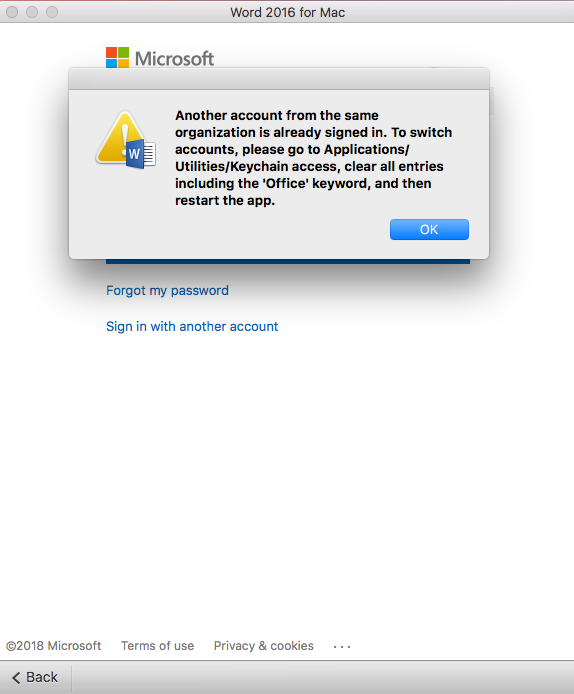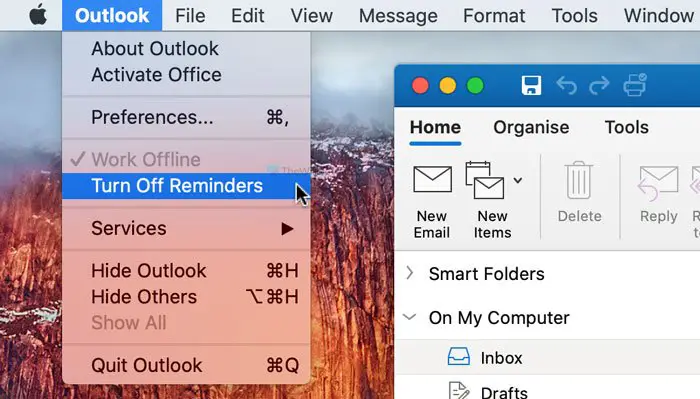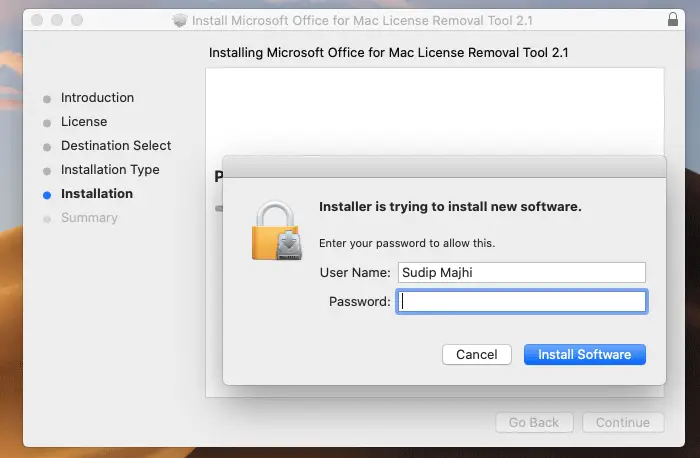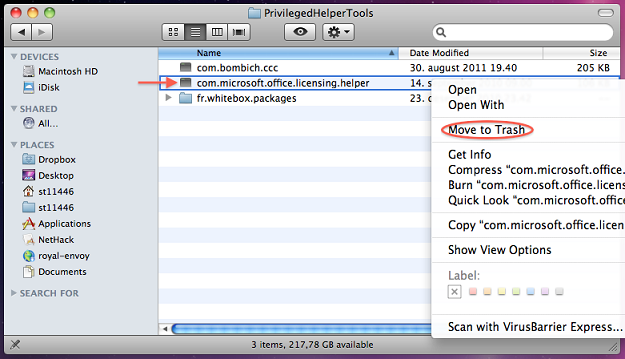|
Do You Know How Dangerous the Microsoft Office Activation Wizard pop-up Is?
Method 3: Use Control Panel to Disable Microsoft Office Click-to-Run. The third method for you is to use Control Panel to disable Microsoft Office Click-to-Run. Here is the tutorial: Step 1: Open the Control Panel application and navigate to the Programs and Features section. Step 2: Right-click Microsoft Office Click-to-Run and click Uninstall. Here is the official download link for MicrosoftOfficeLicenseRemoval tool. (thanks for @lidroider's comment ) The Serializer.pkg in this gist is signature by Microsoft Corporation Official.
Microsoft Office Activation Wizard pop-up is never a good thing to your web browser or computer. It is connected with Adware used to display annoying ads and malicious popup Window and it cheats you to download the sponsored freeware to get commission. If the popup Windows keep appearing on your PC, you are inevitable to fall into the trap.
How was Microsoft Office Activation Wizard pop-up brought into your computer?
Microsoft Office Activation Wizard pop-up comes to your PC with spam email, freeware and porn website. As you know, adware aims to infecting your PC with tens of thousands of ads. This ads are not just annoying, but also very dangerous since each contains a scam. And if you are not enough careful just for a while, you may take the chance to fall into the trap.
Microsoft Office Activation Wizard pop-up producers are packed with the third party application. When you download unknown application from malicious sites, you most probably have adware inside your PC. And if you get adware, it is not wired for popup ads appearing on your PC as popup ads are the most common and notorious form of ads.
As mentioned above, the fake updated requirements from Microsoft Office Activation Wizard pop-up will link you to download malicious freeware. These freeware is not dangerous itself, but when it all cumulated on your PC, your PC operation will be affected and later, the whole system will be damaged. On the other hand, if it is able to bring in freeware, then so as the virus. When virus enters your computer, it is not just the system security problem, but also the privacy and financial safety issues. To a voice there issues erupting on your PC together, you would better to delete Microsoft Office Activation Wizard pop-up immediately. And we suggest you to follow the steps here.

The annoying traits made by Microsoft Office Activation Wizard pop-up
1. It connects malicious server to download more infections into your computer secretly
2. It will casue system crash or death and damage computer programs
3. It changes homepage of web browser and prevents user from modifying it
4. It redirects your web searches to advertising or phishing websites
5. It helps cyber criminal steal some important information of your computer
Microsoft Office Activation Wizard pop-up Removal Process
Part 1. Manually Remove Microsoft Office Activation Wizard pop-up on Windows OS
Part 1. Manually Remove Microsoft Office Activation Wizard pop-up on Windows OS

(Some of the steps will likely require you to exit the page. Bookmark it for later reference.)
Step 1 – Uninstall malicious programs from Control Panel.
- 1. Press “Windows key + R key” together to open Run window
- 2. Input “control panel” in Run window and hit Enter key to open Control Panel
- 3. Click Uninstall a program:
- 4. Right-click programs which may be related with Microsoft Office Activation Wizard pop-up and click Uninstall:
More information about SpyHunter, steps to uninstall, EULA, Threat Assessment Criteria, and Privacy Policy. Free scanner checks if your computer is infected. To remove malware, you’ll need to purchase the full version of SpyHunter. |
Step 2 – Remove malicious extensions from web browsers.
(NOTE – Please Bookmark This Page because some operations may restart or close your system or web browser)
Chrome
On Chrome: Launch up Google Chrome> click Chrome menu > click Tools> click Extension> select extensions which may be related with Microsoft Office Activation Wizard pop-up> click trash bin
Firefox
On Firefox: Open Firefox, navigate to browser menu in the top right > select Add-ons > select add-ons which may be related with Microsoft Office Activation Wizard pop-up> remove it with Disable or Remove button.
Internet Explorer
On IE: Open Internet Explorer >click Tools > click Manager Add-on Tools and Extensions> select extensions which may be related with Microsoft Office Activation Wizard pop-up > click Remove or Disable button.
Microsoft Edge
On Microsoft Edge: (Reset default homepage and search engine to remove Microsoft Office Activation Wizard pop-up associated hijacker)
(NOTE – Please Bookmark This Page because some operations may restart or close your system or web browser)
Reset Edge homepage: Click More (…) > click Settings > select A specific page or pages under “Open with” > select Custom to type your favorite website.
Reset Edge search engine: Click More (…) > click Settings > Click View advanced settings > Click <Add new> under “Search in the address bar with”> type your favorite search engine >click Add as default.
More information about SpyHunter, steps to uninstall, EULA, Threat Assessment Criteria, and Privacy Policy. Free scanner checks if your computer is infected. To remove malware, you’ll need to purchase the full version of SpyHunter. |
Step 3 Find and remove malicious registry entries of Microsoft Office Activation Wizard pop-up or malicious program.
Note – In case any suspicious files, unwanted program, unwanted browser extension, or unwanted search engine cannot be removed manually, it is often caused by malicious program, which may adds files to registry or make changes in registry . Therefore, to uninstall such stubborn items, you need to find and remove malicious files in the Registry Editor. Check the steps below:
1. Press “Windows key + R key” together to open Run window;
2. Input “regedit” in Run window and hit Enter key to open Registry;
3. Click Edit menu and select Find >> Type virus’s name into it and click Find Next >> Right click on the files and click Delete (Only If you can determine that they are related with malware):
More information about SpyHunter, steps to uninstall, EULA, Threat Assessment Criteria, and Privacy Policy. Free scanner checks if your computer is infected. To remove malware, you’ll need to purchase the full version of SpyHunter. |
Step 4 – Disable Notifications of suspicious websites on Web Browsers.
If some unwanted pop-ups or ads still appear on web browser, please try to disable their Notifications on all web browsers:
Edge
On Microsoft Edge
- Launch Edge browser
- Click on menu button of Microsoft Edge
- Click Settings
- Click “View advanced settings”
- Click “Manage” under “Website permissions”
- Find the unwanted URL and click the X (Clear) button to remove the URL.
Chrome
On Google Chrome
- Click the three-dots Menu button on the right upper corner
- Click “Settings” >> Scroll down to the bottom and click “Advanced“
- Click on “Content settings” in the Privacy and Security section
- Click “Notifications“
- Find the unwanted URL >> Click the three dots next to the URL >> click “Block” or “Remove“
Firefox
On Firefox
- Launch Firefox
- Click the Menu button (three bars) on the right upper corner >> Select “Options“
- Click on “Privacy & Security” on the left hand side of the screen
- Scroll down to the “Permissions” >> Click the “Settings” button next to “Notifications”
- Find the unwanted URL >> Click the drop-down menu and select “Block“
IE'
On Internet Explorer
- Launch IE
- Click the Gear button on the right upper corner >> Select “Internet options”
- Click “Privacy” tab and click “Settings” under “Pop-up Blocker” section
- Find the unwanted URL and Click the “Remove” button
NOTE – If the instructions above do not work, please download SpyHunter Anti-malwareto scan entire system.
Step 5 (Optional) – Reset Web Browser Settings
Edge
On Microsoft Edge
- Click the three horizontal dots icon >> Select Settings.
- Click the “Choose what to clear” button
- Click Show more >> Select everything >> click the “Clear” button.
Chrome


On Google Chrome
- Click the Chrome menu icon >> Select Settings
- Scroll down to the bottom and click the Advanced
- Scroll down to the bottom >> Click the Reset button
Firefox
On Firefox
- Click the Firefox menu at the top right corner >> click Help
- Select Troubleshooting Information
- Click the “Refresh Firefox” button
IE
On Internet Explorer
Click on the gear icon >> Click “Internet Options”
Select the “Advanced” tab >> Click “Reset”button
NOTE – If the instructions above do not solve your problems, please download SpyHunter Anti-malwareto scan entire system.
Part 2. Manually Remove Microsoft Office Activation Wizard pop-up on Mac OS
(Some of the steps will likely require you to exit the page. Bookmark it for later reference.)
Step 1.Quick malicious process.
- Click the Go button and select Utilities folder;
- Locate the Activity Monitor icon on the screen and double-click on it
- Under Activity Monitor, find a suspicious-looking process, select it and click Quit Process
- A dialog should pop up, asking if you are sure you would like to quit the troublemaking process. Select the Force Quit option
More information about Combo Cleaner, steps to uninstall, EULA, and Privacy Policy. Free scanner checks if your computer is infected. To remove malware, you’ll need to purchase the full version of Combo Cleaner. |
Step 2.Uninstall malicious programs from Mac.
Open the Finder >> Go to the Applications folder >> Find out malicious apps and Click Move to Trash >> Enter your password if requested.

Step 3. Delete malware-generated files in the following folders:
/Library/LaunchAgents folder;
Library/Application Support folder;
~/Library/LaunchAgents folder;
/Library/LaunchDaemons folder;
/Library/LaunchAgents
– In Finder, choose “Go” then click on “Go to Folder“:
– In the Go to Folder… bar, type: /Library/LaunchAgents:
In the “LaunchAgents” folder, look for any recently-added suspicious files and move them to the Trash. Here are some examples of malicious files generated by malware:
Microsoft Office Activation Wizard pop-up, “com.Microsoft Office Activation Wizard pop-upDaemon”, “com.Microsoft Office Activation Wizard pop-up, “com.Microsoft Office Activation Wizard pop-up.plist”, “com.adobe.fpsaud.plist” “installmac.AppRemoval.plist”, “myppes.download.plist”, “mykotlerino.ltvbit.plist”, etc.
Library/Application Support
– In Finder, choose “Go” then click on “Go to Folder“:
– In the Go to Folder… bar, type: Library/Application Support:
In the “Application Support” folder, look for any recently-added suspicious files and move them to the Trash. Here are some examples of malicious files generated by malware:
Microsoft Office Activation Wizard pop-up, “com.Microsoft Office Activation Wizard pop-upDaemon”, “com.Microsoft Office Activation Wizard pop-up, “com.Microsoft Office Activation Wizard pop-up.plist”, “com.adobe.fpsaud.plist” “installmac.AppRemoval.plist”, “myppes.download.plist”, “mykotlerino.ltvbit.plist”, etc.
~/Library/LaunchAgents
– In Finder, choose “Go” then click on “Go to Folder“:
– In the Go to Folder… bar, type: ~/Library/LaunchAgentst:
Microsoft Office License Removal Tool Windows 10
In the “LaunchAgentst” folder, look for any recently-added suspicious files and move them to the Trash. Here are some examples of malicious files generated by malware:
Microsoft Office Activation Wizard pop-up, “com.Microsoft Office Activation Wizard pop-upDaemon”, “com.Microsoft Office Activation Wizard pop-up, “com.Microsoft Office Activation Wizard pop-up.plist”, “com.adobe.fpsaud.plist” “installmac.AppRemoval.plist”, “myppes.download.plist”, “mykotlerino.ltvbit.plist”, etc.
/Library/LaunchDaemons
– In Finder, choose “Go” then click on “Go to Folder“:
– In the Go to Folder… bar, type: /Library/LaunchDaemon:
In the “LaunchDaemon” folder, look for any recently-added suspicious files and move them to the Trash. Here are some examples of malicious files generated by malware:
Microsoft Office Activation Wizard pop-up, “com.Microsoft Office Activation Wizard pop-upDaemon”, “com.Microsoft Office Activation Wizard pop-up, “com.Microsoft Office Activation Wizard pop-up.plist”, “com.adobe.fpsaud.plist” “installmac.AppRemoval.plist”, “myppes.download.plist”, “mykotlerino.ltvbit.plist”, etc
More information about Combo Cleaner, steps to uninstall, EULA, and Privacy Policy. Free scanner checks if your computer is infected. To remove malware, you’ll need to purchase the full version of Combo Cleaner. |
Step 4. Delete malicious extensions From Safari / Chrome / Firefox.
Safari
Open Safari >> Click Safari menu button and choose Preferences >> Select the Extensions tab >> Select the suspicious extension and click Uninstall.
Firefox
Open Firefox >> Click the menu button >> select Add-ons >> Determine the suspicious or unwanted extension, click the Disable or Remove button.
Chrome
Run Chrome >> Click the three-dot menu button in the upper-right corner >> Select the More Tools >> Click Extensions >> Determine the suspicious or unwanted extension, click on the Trash icon >> Click Remove
Step 5. Use Combo Cleaner to re-diagnose your Mac and see if it is 100% clean:
To make sure that your system is not infected at all, it’s better to run a scan with Combo Cleaner Antivirus and see if it will detect any remaining unwanted items:
More information about Combo Cleaner, steps to uninstall, EULA, and Privacy Policy. Free scanner checks if your computer is infected. To remove malware, you’ll need to purchase the full version of Combo Cleaner.
– Once combocleaner.dmg installer is downloaded, double-click it to install;
– Then launch Combo Cleaner and click “Start Combo Scan” button;
– Combo Cleaner will scan your Mac for malware infections. Once the scan is completed, remove any found infections.
How To Remove A Microsoft Office License
If you decide to discontinue the use of one of your devices, get a new one, or decide you no longer want Microsoft Office installed, you can uninstall the applications and make available one of your free licenses to use on another device.
To Uninstall from a PC
- Open the Start menu.
- Click Control Panel.
- SelectPrograms, or Programs and Features.
- Select Uninstall a program.
- Search for the Microsoft program you wish to uninstall and select it.
- Click Uninstall.
To Uninstall from a Mac
- OpenFinder.
- Select Applications.
- Search for the Microsoft program you wish to uninstall.
- Drag the program icon to the Trash.
Deactivate Licenses
After you have uninstalled Microsoft Office from a device, visit the Office 365 homepage (sign in from https://office365.uwec.edu) to deactivate the license used so it can be applied to another device.
- From the homepage, click on the gear on the top bar.
- Select Office 365 settings under the My app settings heading in the panel that pops up.
- Click Install status on the left hand sidebar.
- All of your current installations of the Office suite will be listed on this page. Click Deactivate on the install you are no longer using.